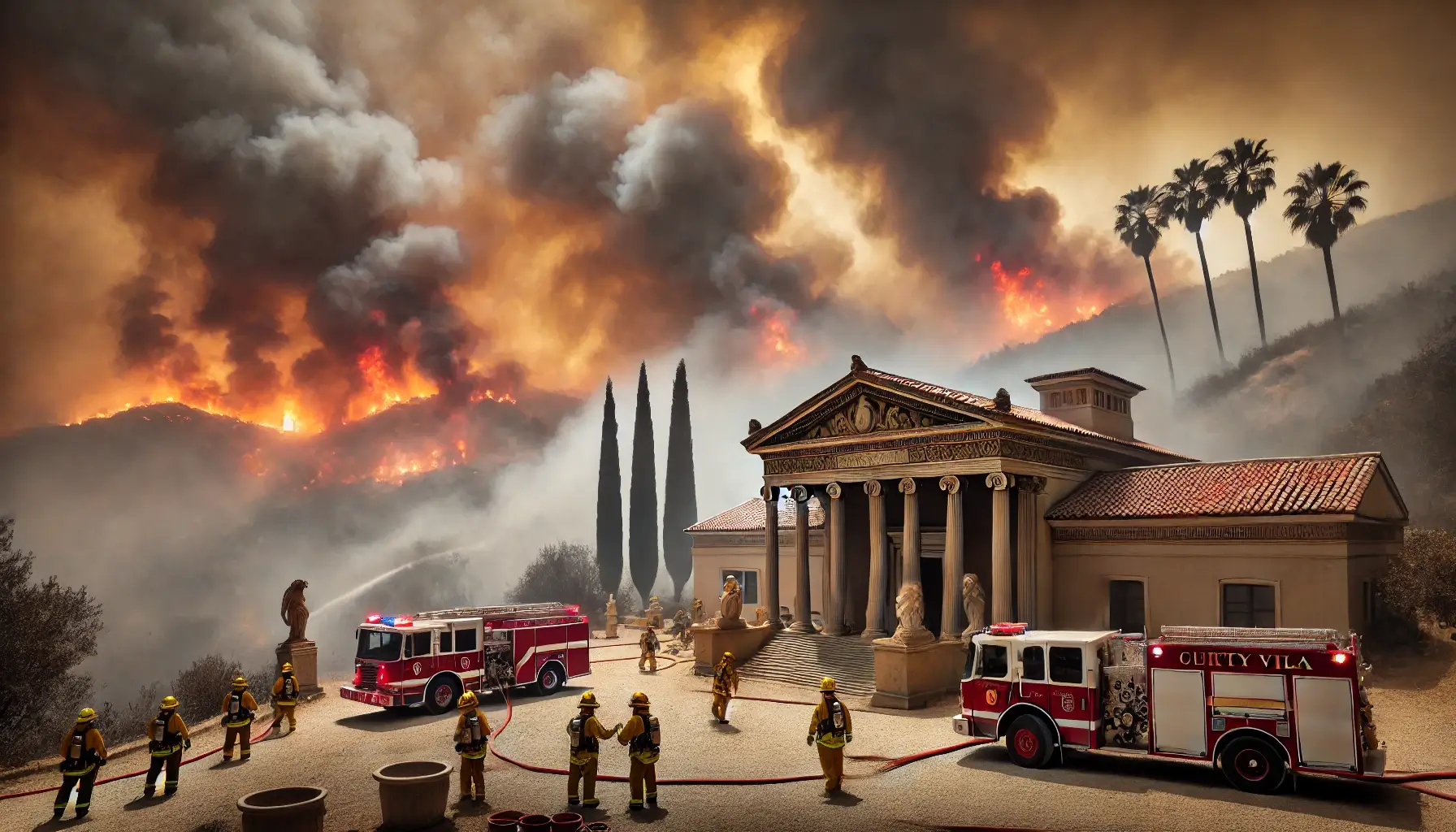The Los Angeles wildfires continue to wreak havoc across the region, with multiple blazes threatening homes, historical landmarks, and cultural institutions. Among the hardest-hit areas are the Pacific Palisades, where the Palisades Fire has forced the evacuation of thousands, and the Eaton Canyon area, where a rapidly spreading brush fire has caused additional concern.
According to CNN, the Palisades Fire has consumed more than 12,000 acres, destroying at least 40 homes and forcing the evacuation of over 15,000 residents. Firefighters are working tirelessly to contain the flames, but strong Santa Ana winds continue to fuel the fire, complicating containment efforts. As of now, the fire is only 30% contained, with officials warning that high winds and dry conditions could lead to further spread.
Adding to the complexity is the threat posed to cultural institutions. The Los Angeles Times reports that landmarks like the Getty Villa and the Huntington Library are under serious risk. Emergency crews have prioritized these areas, deploying additional resources to safeguard the priceless collections and historical structures housed within. Several institutions, including the Eames House, have temporarily closed as a precaution.
Governor Gavin Newsom has declared a state of emergency, enabling additional federal resources to be allocated. Firefighting crews from neighboring states, including Arizona and Nevada, have been dispatched to assist in the efforts. Despite the reinforcements, officials caution that the fight against these fires is far from over.
The impact of the wildfires extends beyond physical destruction. Air quality in Los Angeles has reached hazardous levels, prompting health officials to urge residents to wear masks and use air purifiers. The local power grid has also been affected, with outages reported in several neighborhoods.
Climate experts attribute the severity of the fires to a combination of prolonged drought and rising temperatures, underscoring the challenges posed by climate change. “These events are becoming more frequent and more intense,” said Dr. Lisa Chang, a climatologist at UCLA. “We must adapt and take preventive measures to mitigate future risks.”
As Los Angeles battles these destructive fires, community resilience remains a beacon of hope. Local organizations and volunteers have mobilized to support evacuees, providing food, shelter, and medical assistance. However, the road to recovery will undoubtedly be long and arduous.

